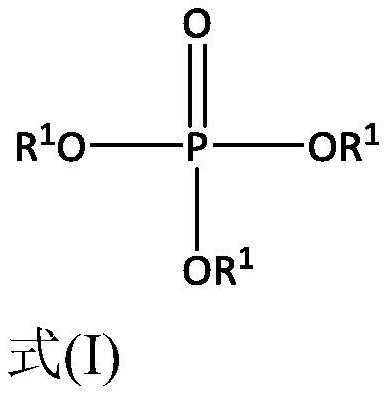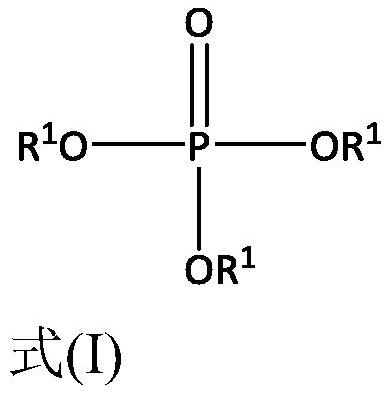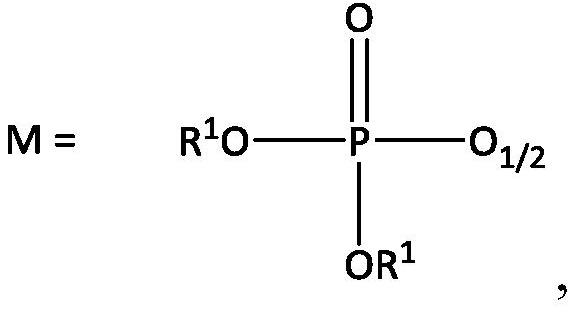Use of long-chain phosphoric acid esters in aqueous polyurethane dispersions
A technology of polyurethane dispersion and long-chain phosphate, which is applied in polyurea/polyurethane coatings, phosphorus oxides, layered products, etc., and can solve problems such as limitations
- Summary
- Abstract
- Description
- Claims
- Application Information
AI Technical Summary
Problems solved by technology
Method used
Image
Examples
Embodiment 1
[0094] Embodiment 1: the synthesis of stearyl phosphate that the degree of esterification is 1.5:
[0095] While stirring and introducing N 2 While heating stearyl alcohol (≥95%, 212.8g, 0.787mol) to 70°C, add P in small batches 4 o 10 (37.23 g, 0.131 mol), so that the temperature of the reaction mixture does not rise above 80 °C. at P 4 o 10 After the addition of , after the introduction of N 2 The reaction mixture was stirred at 80° C. for 3 hours until the acid value was constant. After decanting and cooling, a colorless solid with an acid value of 164 mgKOH / g was obtained.
Embodiment 2
[0096] Embodiment 2: the synthesis of stearyl phosphate that the degree of esterification is 1.8:
[0097] While stirring and introducing N 2 While heating stearyl alcohol (≥95%, 174.7g, 0.646mol) to 70°C, add P in small batches 4 o 10 (25.45 g, 0.0896 mol), so that the temperature of the reaction mixture does not rise above 80 °C. at P 4 o 10 After the addition of , after the introduction of N 2 The reaction mixture was stirred at 80° C. for 3 hours until the acid value was constant. After decanting and cooling, a colorless solid with an acid number of 139 mg KOH / g is obtained.
Embodiment 3
[0098] Embodiment 3: the synthesis of stearyl phosphate that the degree of esterification is 2.2:
[0099] While stirring and introducing N 2 While heating stearyl alcohol (≥95%, 178.7g, 0.661mol) to 70°C, add P in small batches 4 o 10 (21.31 g, 0.0751 mol) so that the temperature of the reaction mixture does not rise above 80°C. at P 4 o 10 After the addition of , after the introduction of N 2 The reaction mixture was stirred at 80° C. for 3 hours until the acid value was constant. After decanting and cooling, a colorless solid with an acid number of 127 mg KOH / g is obtained.
PUM
| Property | Measurement | Unit |
|---|---|---|
| Acid value | aaaaa | aaaaa |
| Acid value | aaaaa | aaaaa |
| Acid value | aaaaa | aaaaa |
Abstract
Description
Claims
Application Information
 Login to View More
Login to View More - R&D
- Intellectual Property
- Life Sciences
- Materials
- Tech Scout
- Unparalleled Data Quality
- Higher Quality Content
- 60% Fewer Hallucinations
Browse by: Latest US Patents, China's latest patents, Technical Efficacy Thesaurus, Application Domain, Technology Topic, Popular Technical Reports.
© 2025 PatSnap. All rights reserved.Legal|Privacy policy|Modern Slavery Act Transparency Statement|Sitemap|About US| Contact US: help@patsnap.com



